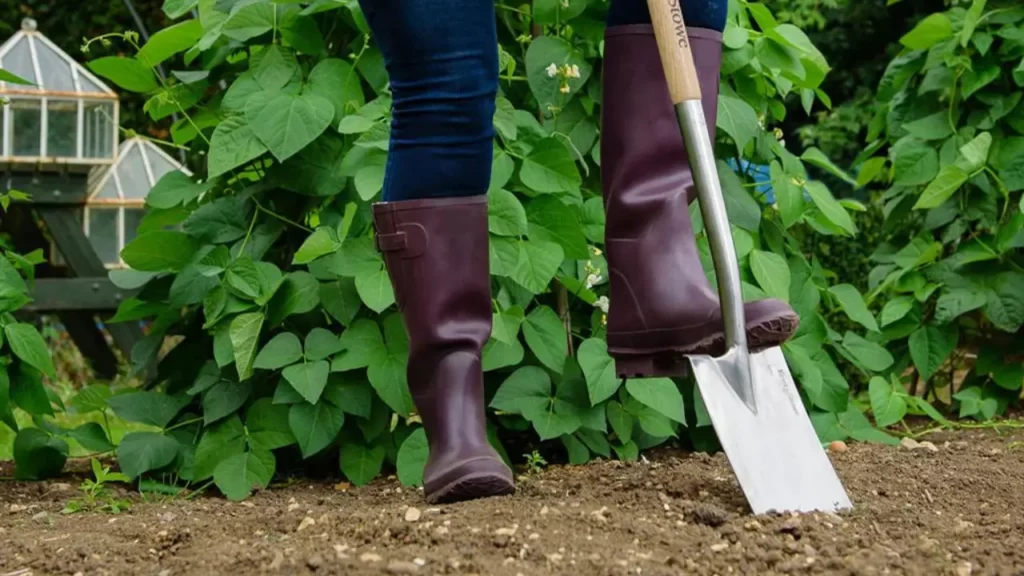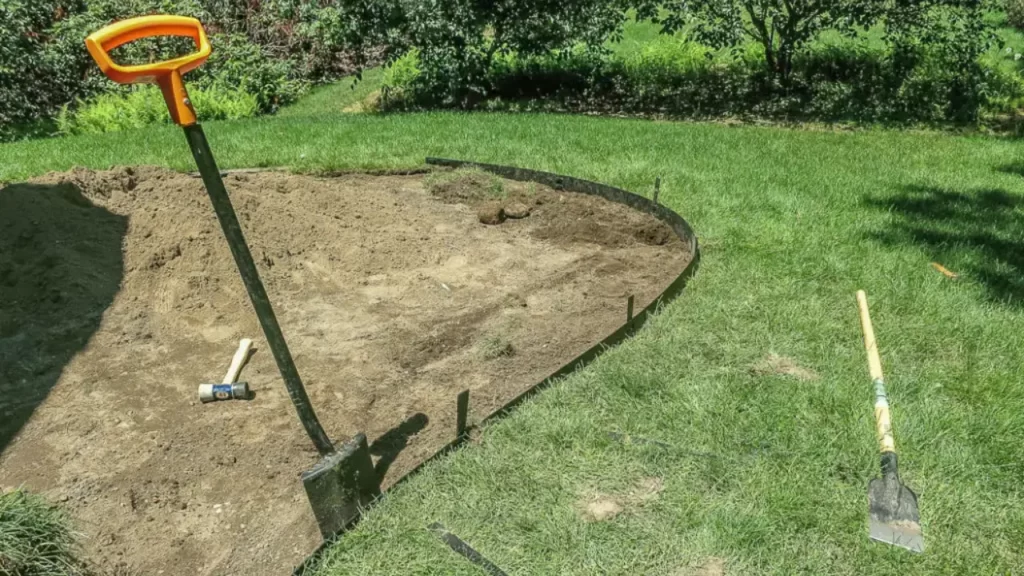When it comes to gardening and landscaping the right gardening tools can make the gardening process easy and fast. One of the best tools which every gardener or landscaper should have is a Spade. The Spade is known for its power, versatility, and efficiency.
A Spade can be used for multiple tasks like digging, transplanting and edging, etc. So, In this article, we will explore the features and benefits of spades, along with tips on how to use them effectively.

What is a Spade?
A spade is a gardening tool with a flat rectangular blade attached to a long handle. This tool is specially designed for digging, moving soil, cutting through roots, etc in the garden or any area. Normally the blade of the spade is made of a strong material such as steel so it can be used for heavy-duty tasks and used for a long time.
Types of Spades
Now there are different types of garden spades that are designed for specific tasks, So, here we explore the 5 most common spades used for different tasks.
Standard Spade
The standard spade is the most commonly used spade which has a flat and straight blade that is normally used for digging and removing the soil.
Border Spade
The border spade is just the same as the standard spade but it is smaller in size and best used in compact spaces like creating neat edges around flower beds and borders.
Also Read: Garden Fork a useful tool to do multiple gardening tasks
Digging Spade
As the name suggests the digging spade is specifically designed for digging purposes. It has a slightly curved blade making it suitable for heavier digging tasks. It is best for breaking up compacted soil and digging trenches.
Trenching Spade
This spade also tells the use of it by its name only, the trenching spade is specifically designed for digging trenches. It has a long and narrow blade which allows precious and deep trenching.
Folding Spade
The folding spade is also similar to the standard spade but it is a compact and portable version of it. The foldable spade can be folded into smaller sizes which makes this spade easy to carry around in outdoor activities like camping, hiking, etc.

Choosing the Right Spade for the Job
While considering the spade for you, make sure to list down all of your specific gardening tasks and the soil condition where the spade will be used. But most commonly standard and border spades are sufficient enough for most gardening tasks.
For heavy digging and trenching tasks, the digging or the trenching spade is suitable. Additionally, choose a spade with a comfortable handle grip to minimize strain on your hands and wrists.
Also Read: Half-Moon Edger vs Spade which one is best for digging and edging
Benefits of Using a Spade
Versatility
The spades are one kind of gardening tool which can be used for multiple gardening and landscaping tasks. If you need to dig a planting hole, create clean edges, or transplant flowers all the tasks can be done with a spade.
Durability
The spades are commonly made of high-quality materials like carbon steel or stainless steel. These materials make the blade stronger with durability to withstand regular use and challenging soil conditions.
Precision
The sharp and sturdy edges of the spade blade enable precise digging and cutting. This precision is particularly important when working around delicate plants or when creating defined edges.
Ergonomics
Most of the spades come with ergonomic features such as cushioned handles or adjustable shafts. These design elements help reduce strain on your body and provide a more comfortable working experience.

Also Read: Garden Hoe the best tool for Weeding and other gardening tasks
How to Use a Spade
Here are the different steps and techniques to use the spade.
Proper Grip and Stance
First, make sure that while getting the spade check its grip is strong and comfortable. Now hold the handle firmly with both hands, position your one hand on the handle grip and another one slightly above the blade. Stand with your feet shoulder-width apart to maintain balance and stability.
Digging Techniques
For digging holes, position your spade blade perpendicular to the ground and push the blade into the soil using your foot. Now step on the blade to go deeper inside the soil then lift the soil out using the spade.
Edging Techniques
To make the perfect edges hold the spade blade at an angle and push it into the soil along the desired edge. Move the blade in a semi-circular motion while applying downward pressure to cut through the turf.
Transplanting Techniques
For transplanting the plants, use the spade to carefully lift the plants from their original location. Then make another hole at the location where you need to put the plat. Then put the plant in the hole ensuring that the new hole depth is the same as before. Fill the hole with soil and gently press it.
Maintaining and Cleaning Your Spade
To keep your spade in optimal condition for a longer period of time, make sure to clean the spade after every use by removing dirt or any debris from the blade. If the blade feels dull make sure to sharpen the blade using the file or sharpening stone to keep its sharpness. Finally, make sure to store it in a dry or cold place to prevent it from rusting.
Common Mistakes to Avoid
Here are some of the common mistakes to avoid which can damage the spade.
Overloading the Spade
Avoid putting an excessive load on the spade blade which could possibly damage the blade. So, to know its load capacity read the manufacturer’s guidelines and instructions.
Using the Wrong Technique
Using the incorrect techniques while using the spade can add strain on the blade which could possibly damage the spade. also, using the wrong techniques can possibly hurt the person using it from its sharp blades.
Neglecting Maintenance
Proper maintenance can keep the performance and efficiency of any tool for a longer time. So, regular maintenance is essential to ensure the longevity of your spade. If you neglect the maintenance tasks such as cleaning, sharping, and storing it in the optimal area will decrease the performance and the lifespan of the spade.
Also Read: Hoe vs Rake Which is the best tool for Gardening
FAQs
What is the difference between a spade and a shovel?
A spade and a shovel bot are gardening tools that both have their functions making them different and suitable for specific tasks. A spade has a flat and rectangular blade which is best for digging and cutting. On the other hand, a shovel has a concave blade which is best for moving the loosened soil and gravel, etc.
Can I use a spade for lifting heavy objects?
Yes, you can use a spade to lift objects which do not have much weight, but if you lift heavy objects from the spade it may damage the blade or it might bend.
Can a spade be used for digging in rocky soil?
Yes, a spade can be used for digging in rocky soil but make sure that your spade blades are strong and sharp because the rocky soil is tough to dig compared to normal soil.
How often should I sharpen the blade of my spade?
There is not any certain time to sharpen the spade blade, but whenever you feel the blade feels dull then you can sharpen the blade of the spade.
Are there any safety precautions I should follow while using a spade?
When using a spade, always wear appropriate protective gear such as gloves and closed-toe shoes. Be mindful of your surroundings, especially when digging near underground utilities or in areas with hidden obstacles. Additionally, maintain proper posture and lifting techniques to prevent strain.
Conclusion
A garden spade is an indispensable tool that is essential for every gardener and landscaper. And this tool can be used for multiple gardening tasks like digging, edging, and transplanting. But to keep this tool in perfect condition you need to use it carefully and maintain it to increase its life span and functionality.
